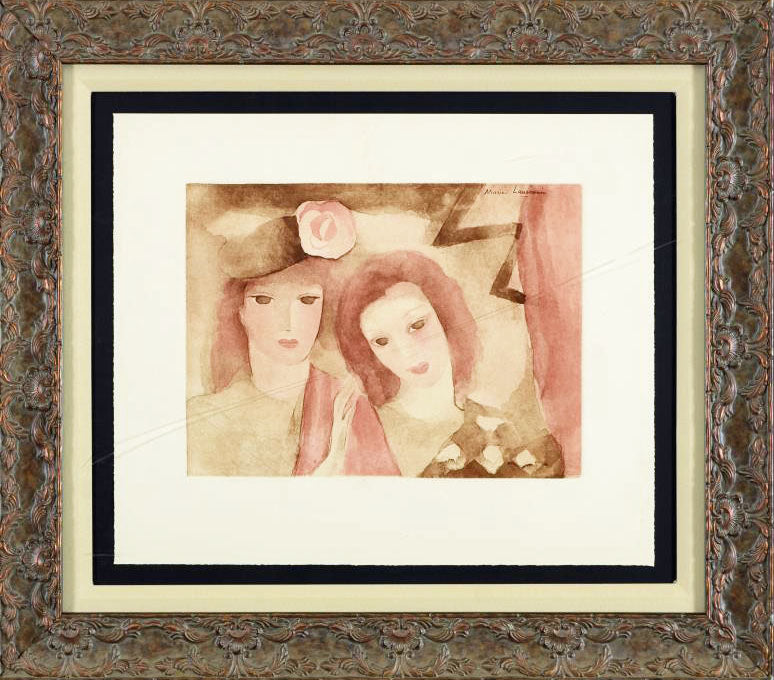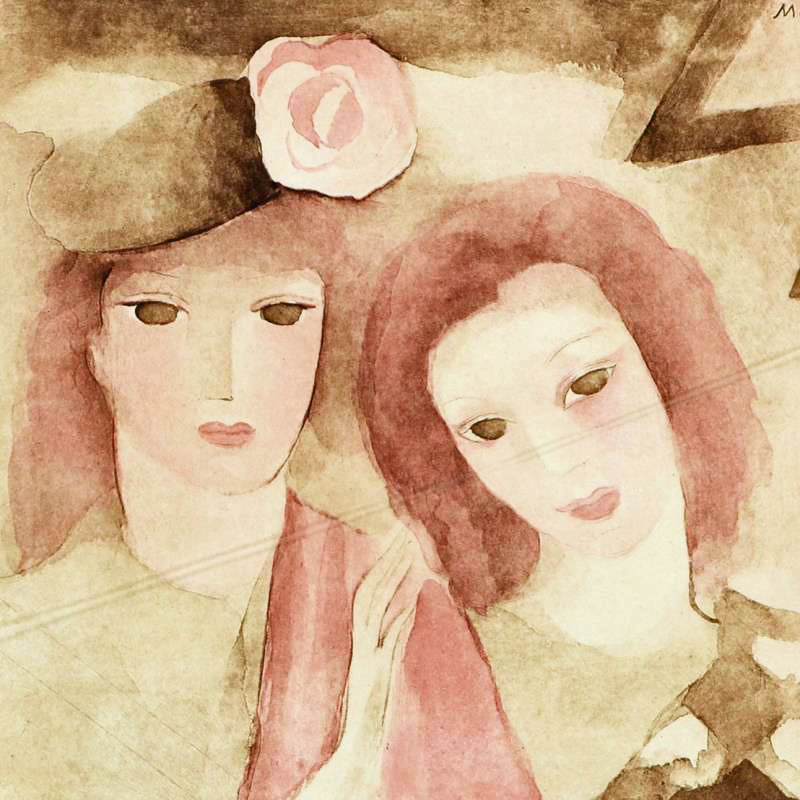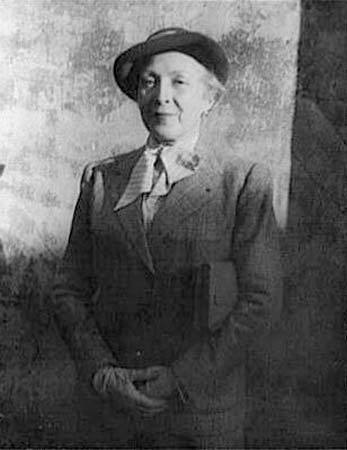Marie Laurencin (1883-1956) was a French painter and printmaker. She became an important figure in the Parisian Avant-Garde as a member of the Cubists associated with the Section d'Or. She was born in Paris, where she was raised by her mother and lived much of her life. At 18, she studied porcelain painting in Sèvres. She then returned to Paris and continued her art education at the Académie Humbert, where she changed her focus to oil painting. During the early years of the 20th century, Marie Laurencin was an important figure in the Parisian Avant-Garde. A member of both the circle of Pablo Picasso, and Cubists associated with the Section d'Or, such as Jean Metzinger, Albert Gleizes, Robert Delaunay, Henri le Fauconnier and Francis Picabia, exhibiting with them at the Salon des Indépendants (1910-1911) and the Salon d'Automne (1911-1912), and Galeries Dalmau (1912) at the first Cubist exhibition in Spain. She became romantically involved with the poet Guillaume Apollinaire, and has often been identified as his muse. In addition, Laurencin had important connections to the salon of the American expatriate and famed lesbian writer Natalie Clifford Barney. She had relationships with men and women, and her art reflected her life, her "balletic wraiths" and "sidesaddle Amazons" providing the art world with Marie Laurencin's brand of "queer femme with a Gallic twist."
During the First World War, Maris Laurencin left France for exile in Spain with her German-born husband, Baron Otto von Waëtjen, since through her marriage she had automatically lost her French citizenship. The couple subsequently lived together briefly in Düsseldorf. After they divorced in 1920, she returned to Paris, where she achieved financial success as an artist until the economic depression of the 1930's. During the 1930's she worked as an art instructor at a private school. She lived in Paris until her death. Laurencin's works include paintings, watercolors, drawings, and prints. She is known as one of the few female Cubist painters, with Sonia Delaunay, Marie Vorobieff, and Franciska Clausen. She illustrated several books, including a 1930 edition of Lewis Carroll’s Alice in Wonderland. Her stage designs included scenery for the Ballets Russes (1924) and the Comédie Française (1928).
Marie Laurencin's work shows the influence of Cubist painters Pablo Picasso and Georges Braque, who was her close friend, she developed a unique approach to abstraction which often centered on the representation of groups of women and female portraits. Her work lies outside the bounds of Cubist norms in her pursuit of a specifically feminine aesthetic by her use of pastel colors and curvilinear forms. Laurencin continued to explore themes of femininity and what she considered to be feminine modes of representation until her death. Her works include paintings, watercolors, drawings, and prints. There were a number of books published, including catalogues raisonnés of both her engravings and her paintings, during the 1980s, and prominent exhibitions in France and the United States brought Laurencin's work to the attention of a new generation. Her reputation has since continued to grow.
Marie Laurencin's influence can be seen across the work of a number of artists who have employed visual languages of femininity in order to explore the place of women and gender expectations in modern life. Louise Bourgeois, Laurencin's most celebrated student, similarly used clothing and other symbols of womanhood in order to explore female relationships, using psychoanalytic ideas to consider familial relationships, the human body and emotional states. Hannah Wilke and Harmony Hammond deployed imagery associated with womanhood in order to explore lesbian identity in the wake of the civil rights movement. More recently, Karla Black's use of pastel cosmetics has expanded Laurencin's distinctive color scheme into three-dimensions and continued her project of visual pleasure as a form of female advocacy. In 1983, on the one hundredth anniversary of Laurencin's birth, the Musée Marie Laurencin opened in Nagano Prefecture, Japan, on the initiative of collector Masahiro Takano, an executive at Hitachi Systems, who began to collect Laurencin's works in the 1970s; it was, at this point, the only museum in the world specialized to focus on a female painter.

 Vendor:Two Women - Limited Edition Lithograph on Paper by Marie Laurencin (1883–1956)Art Deals
Vendor:Two Women - Limited Edition Lithograph on Paper by Marie Laurencin (1883–1956)Art Deals



